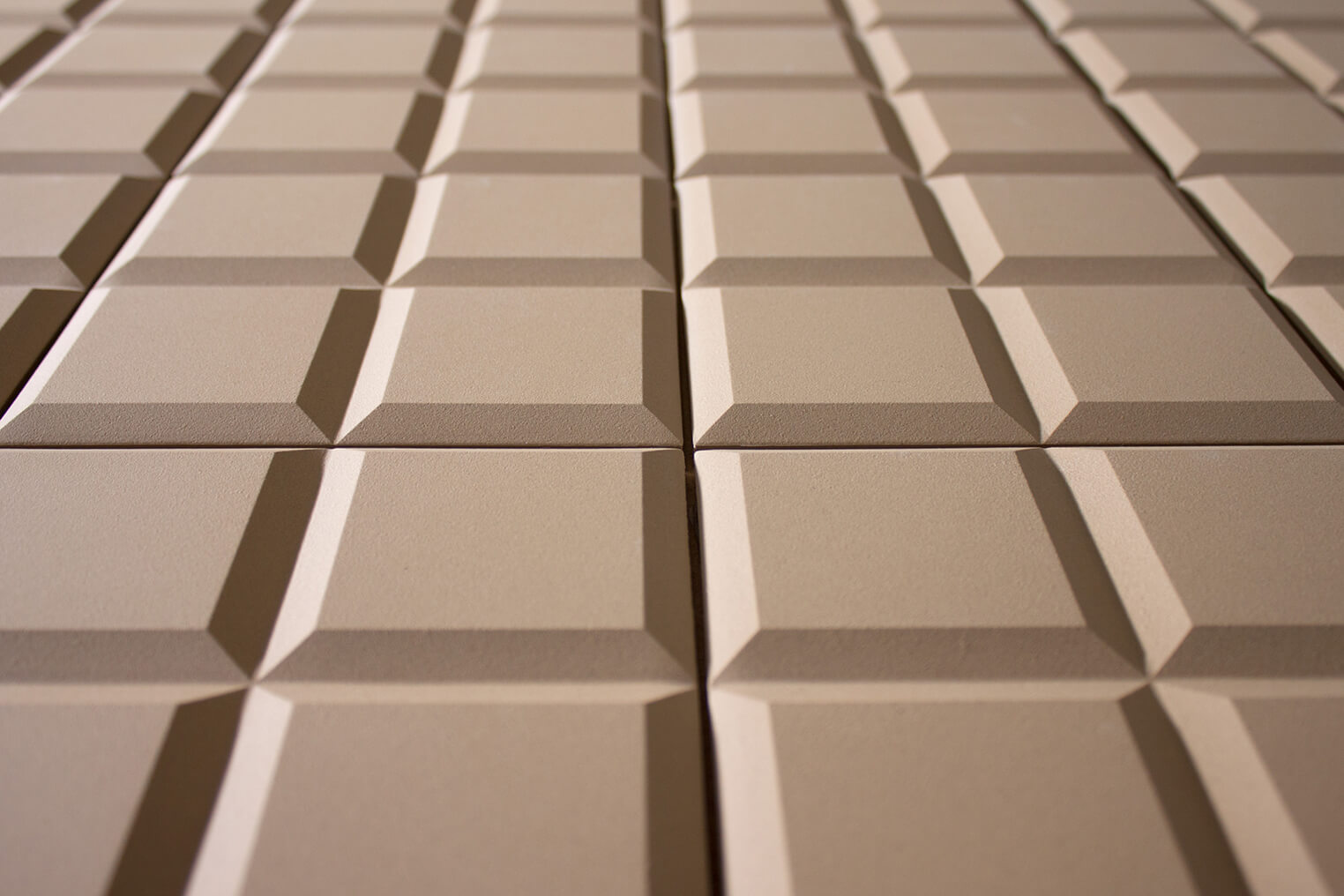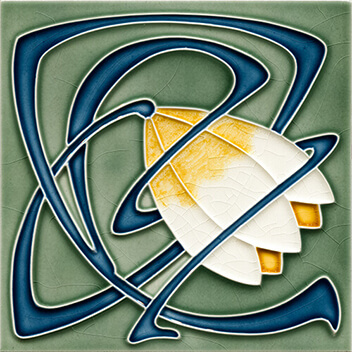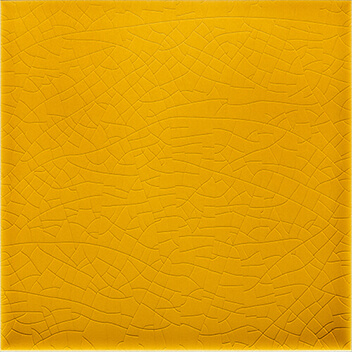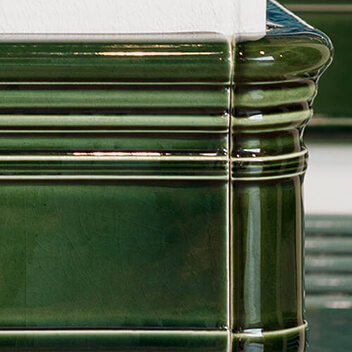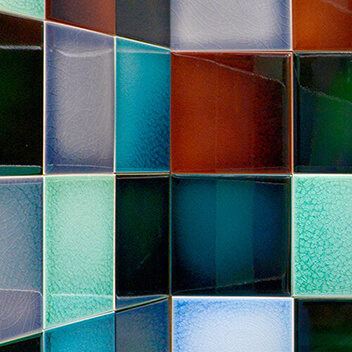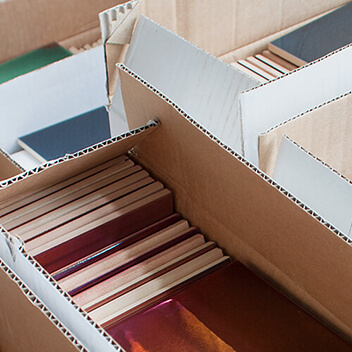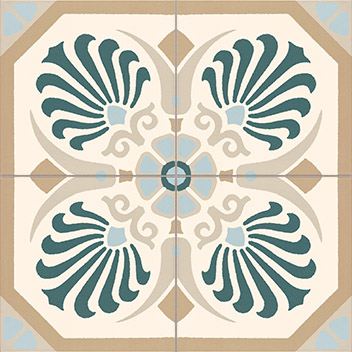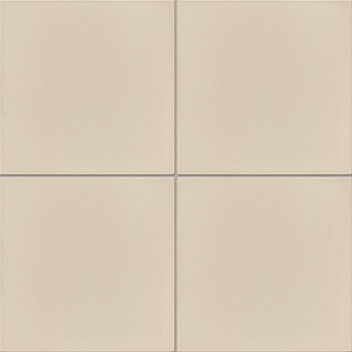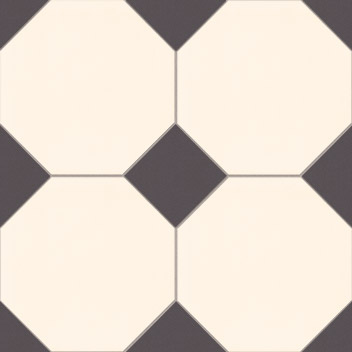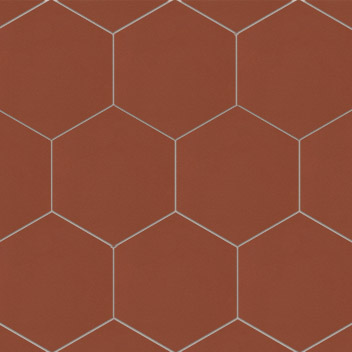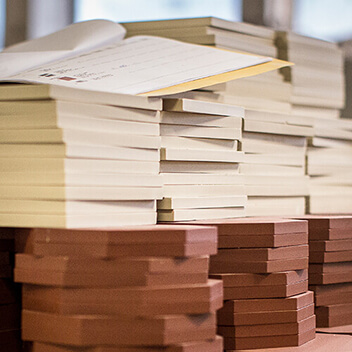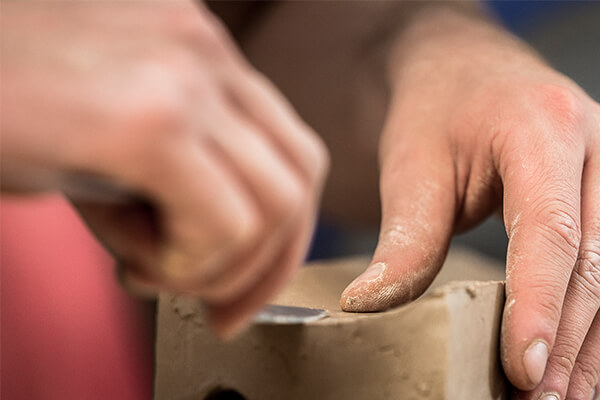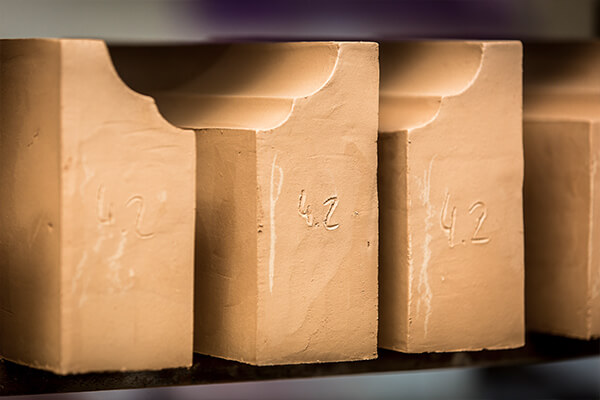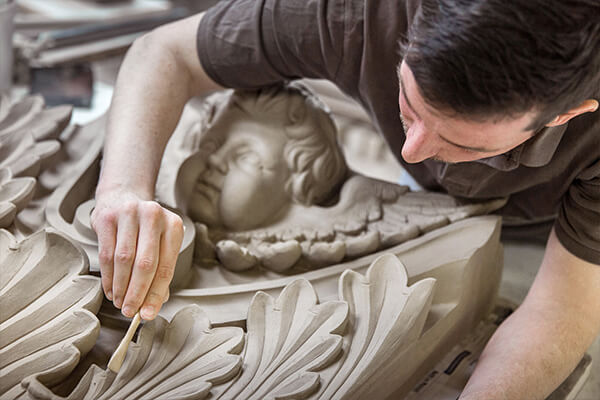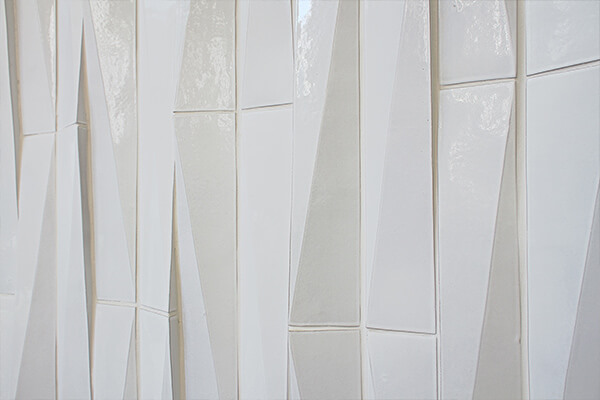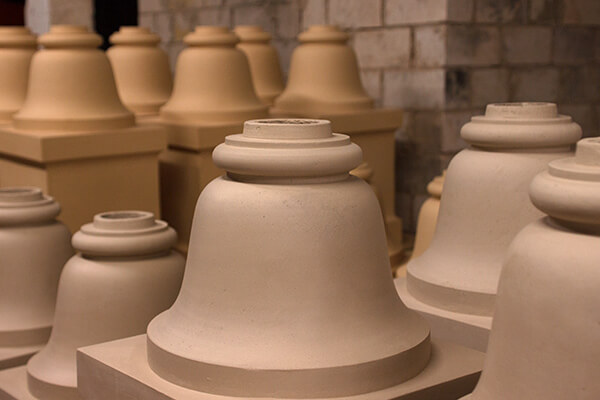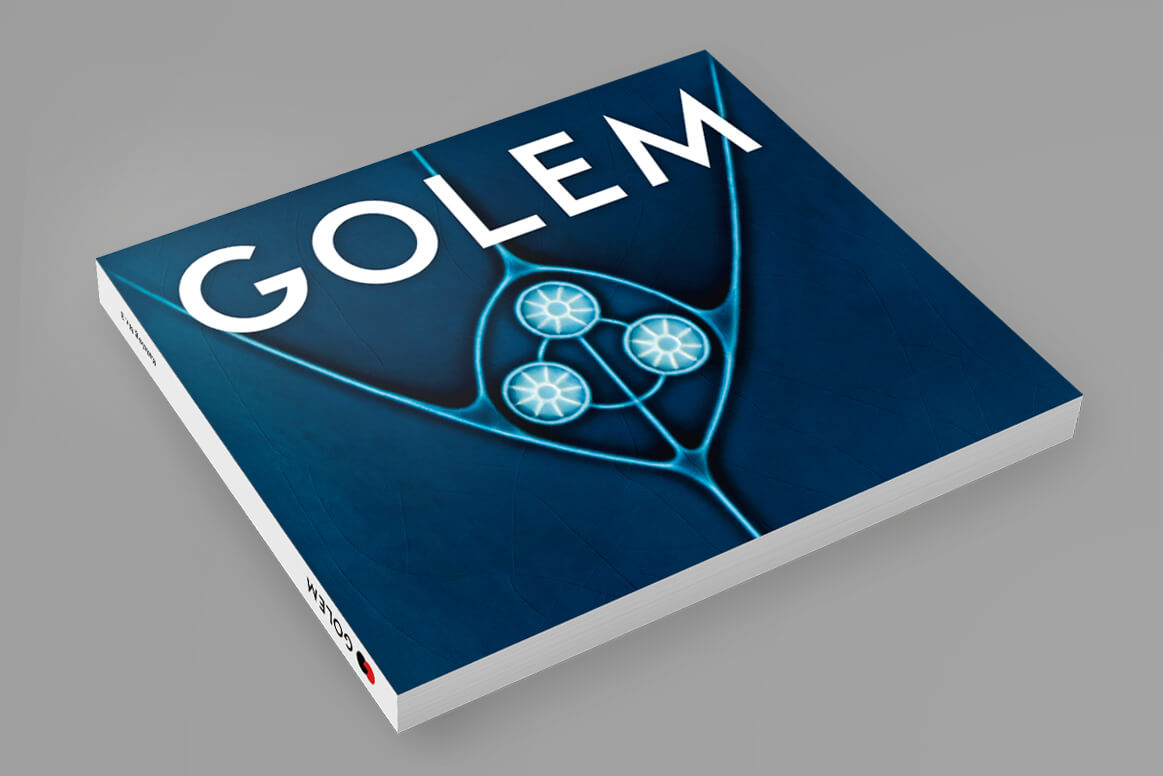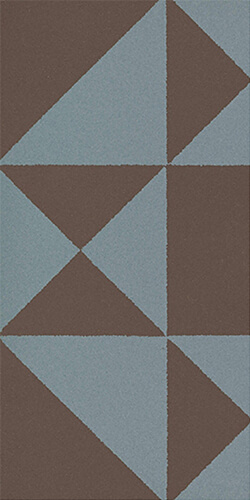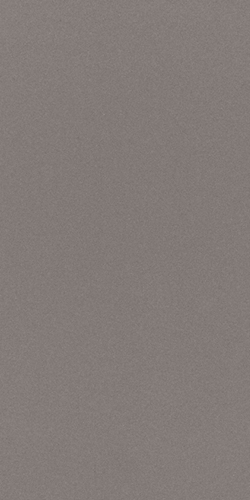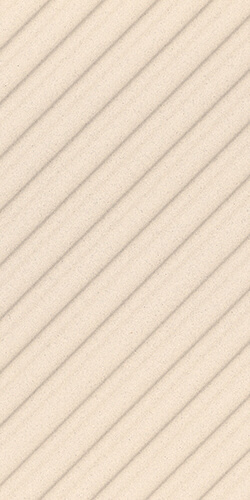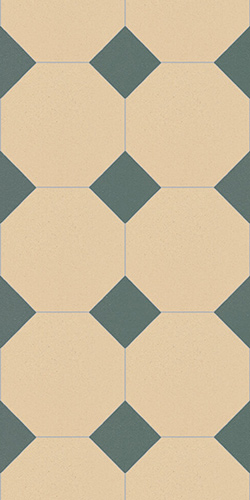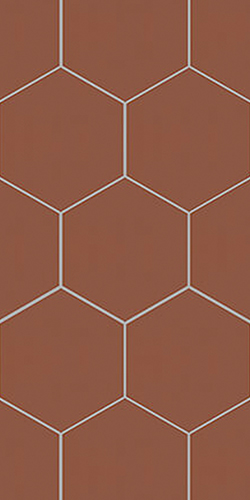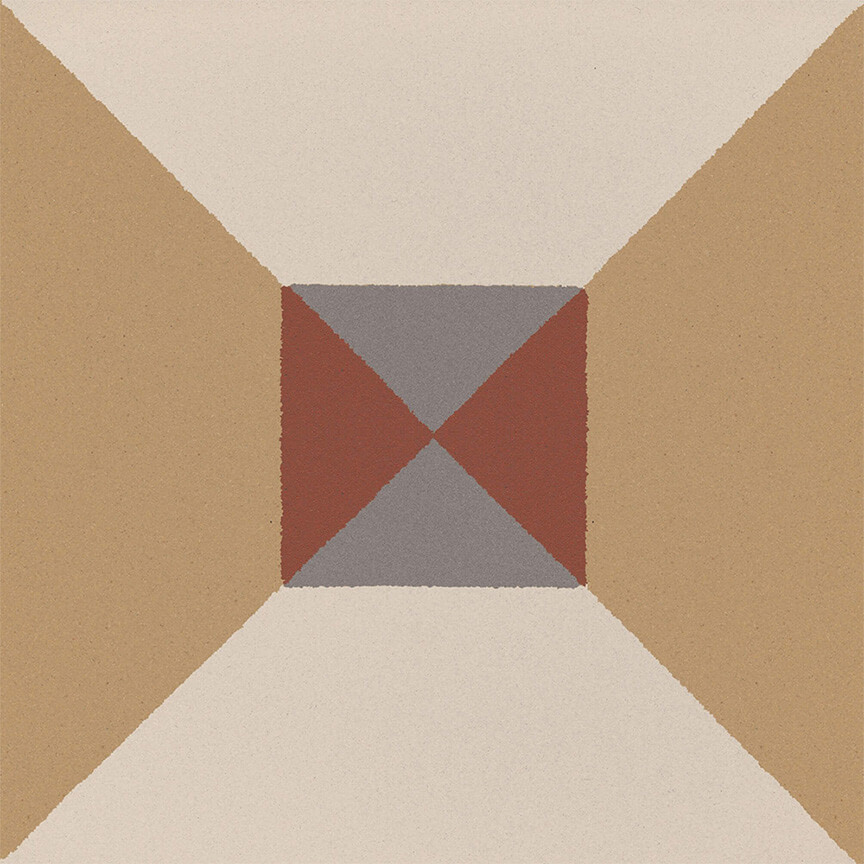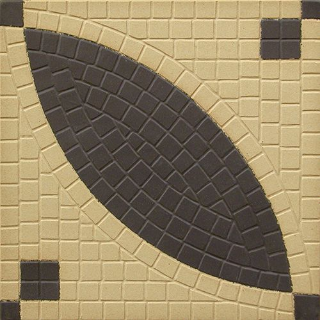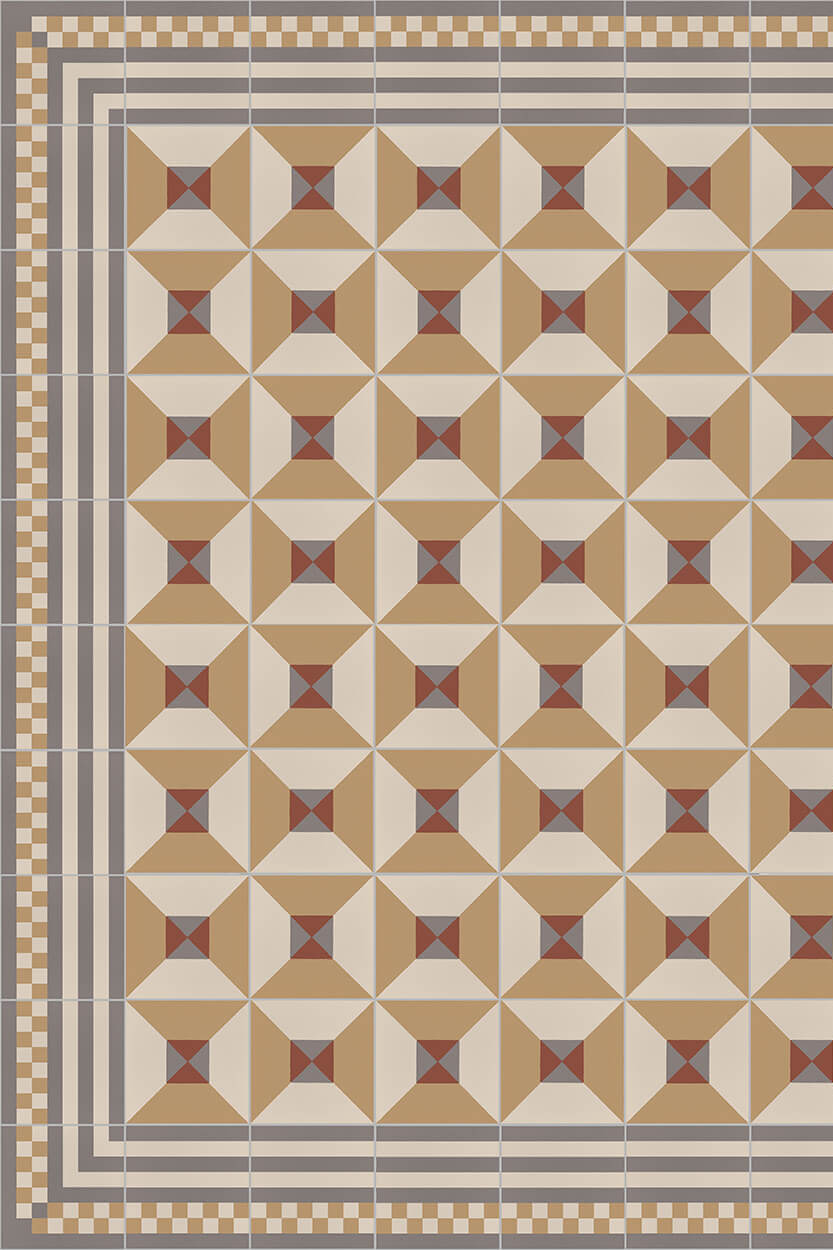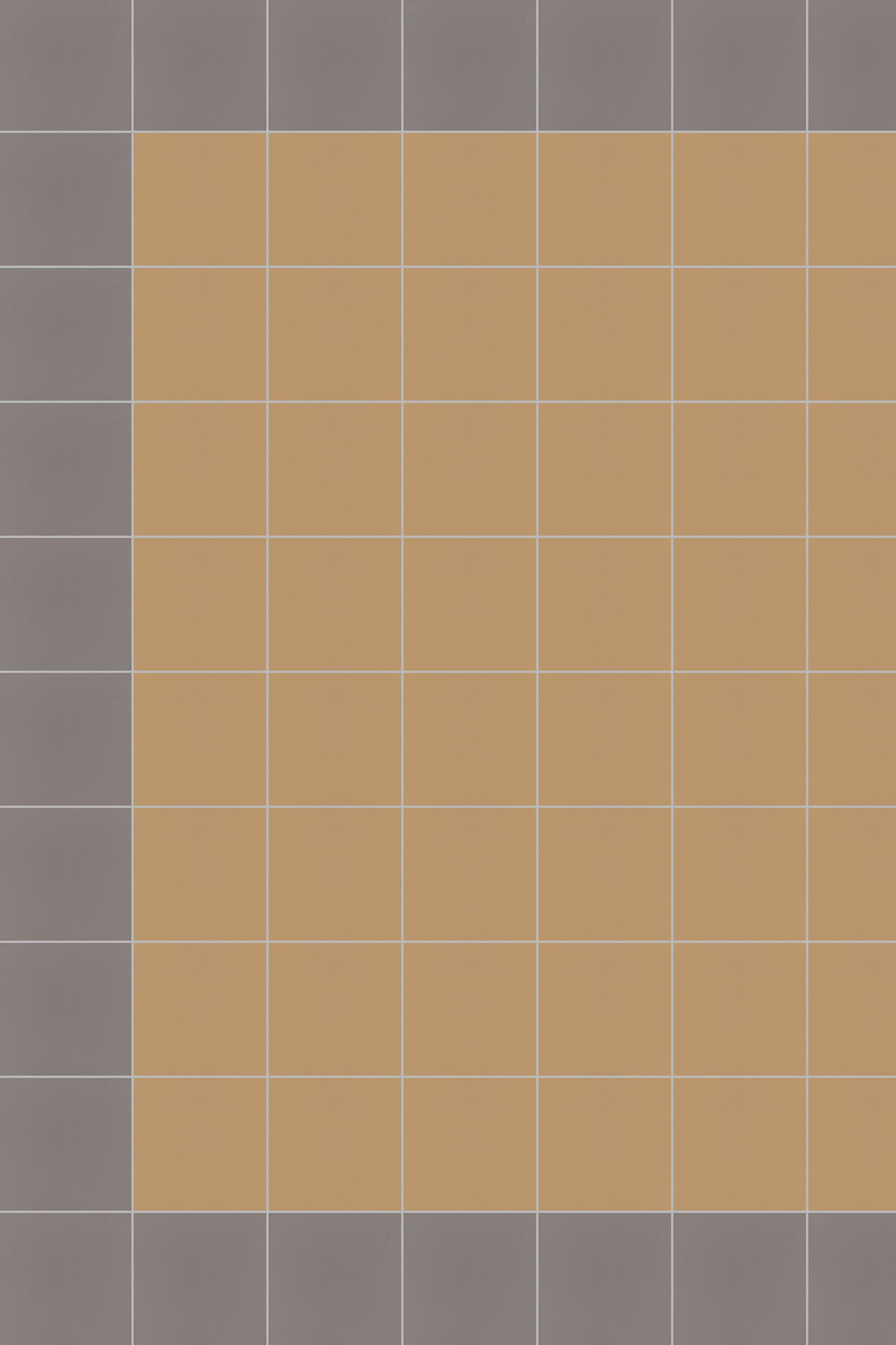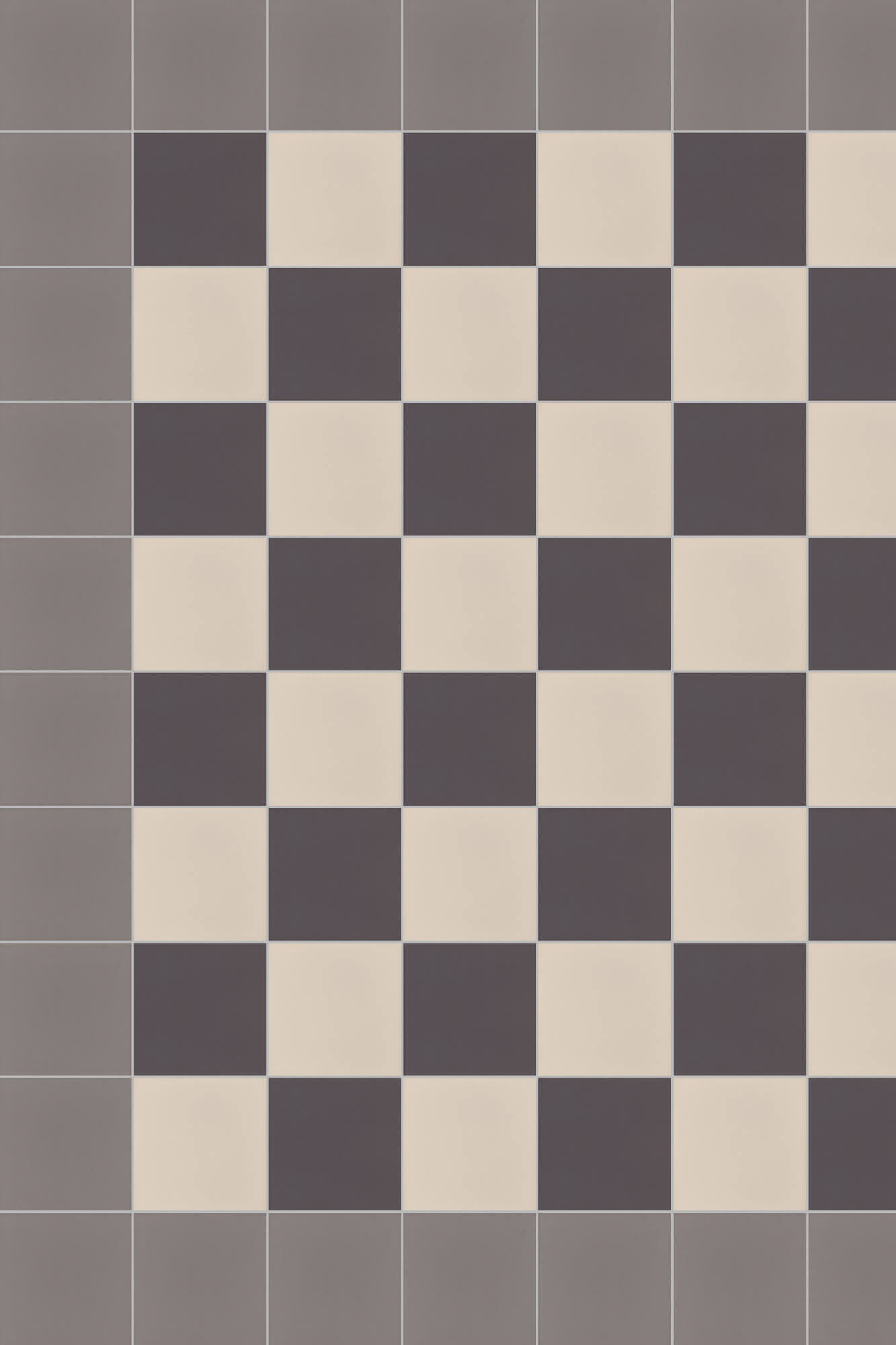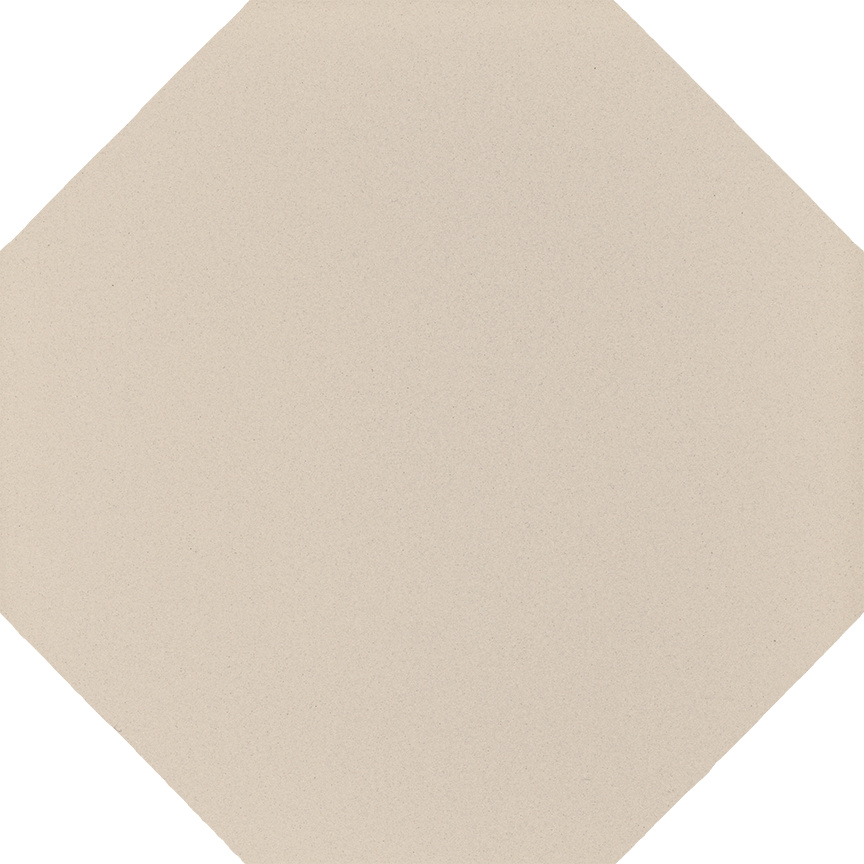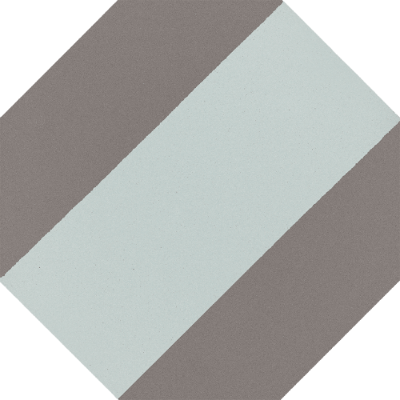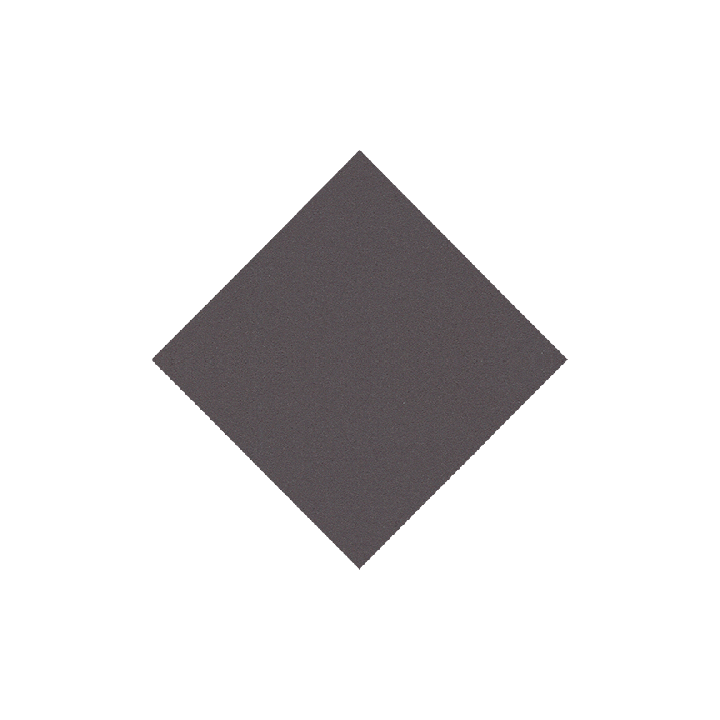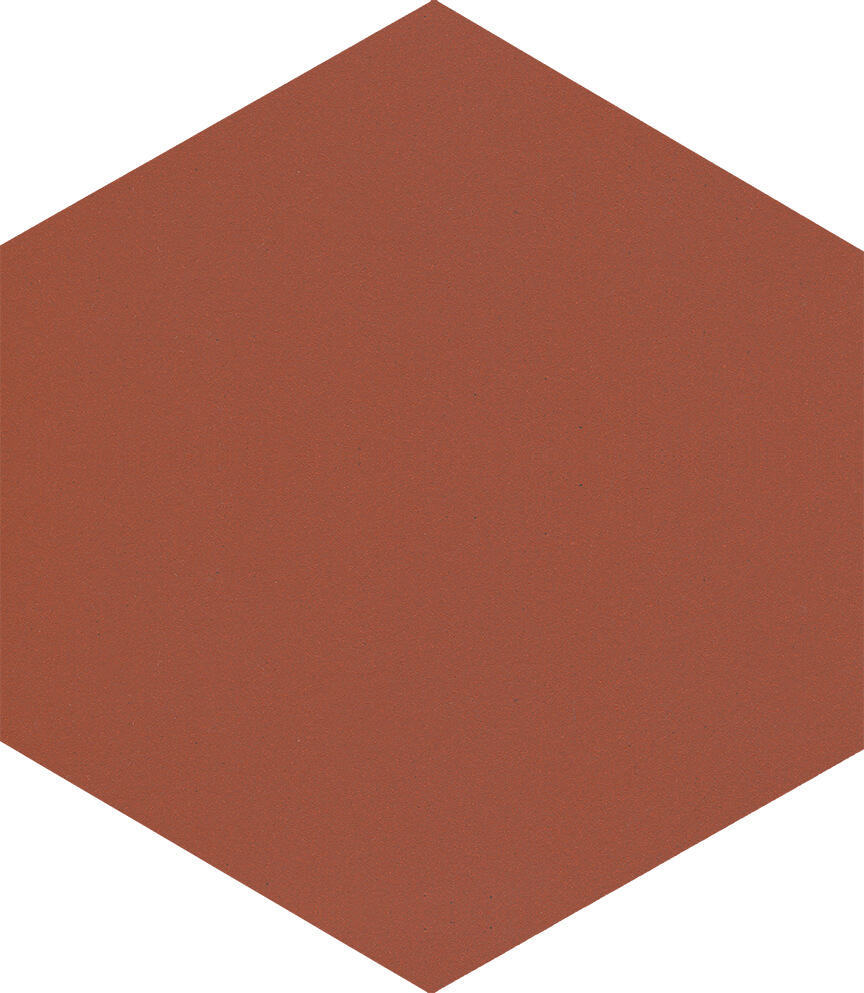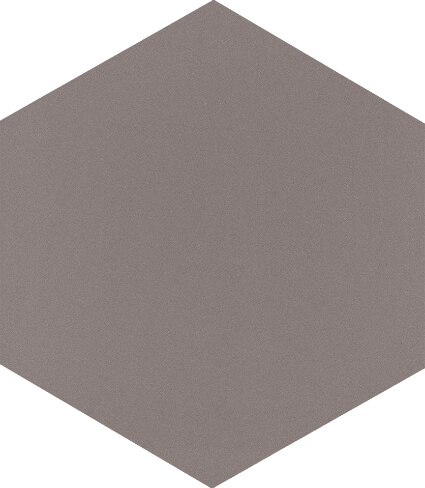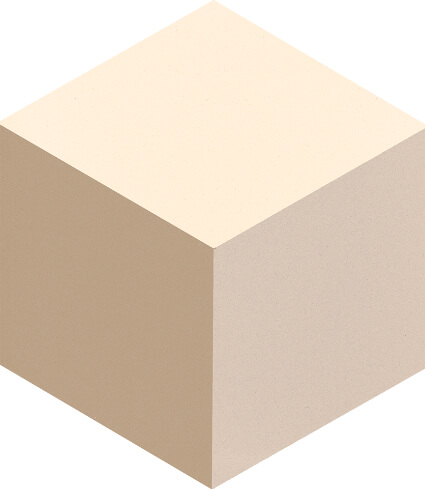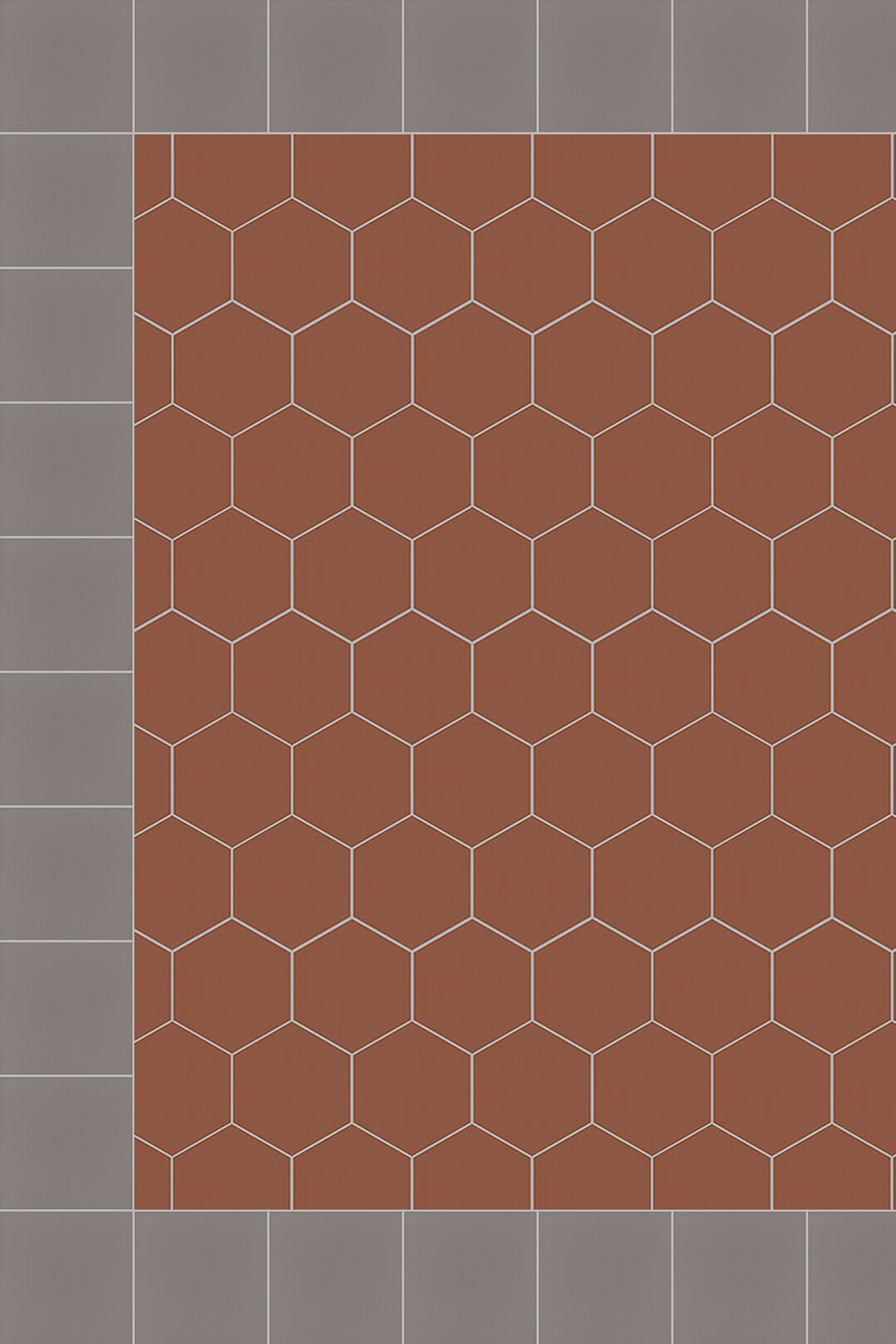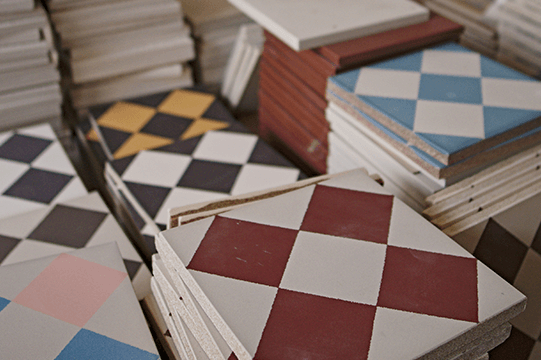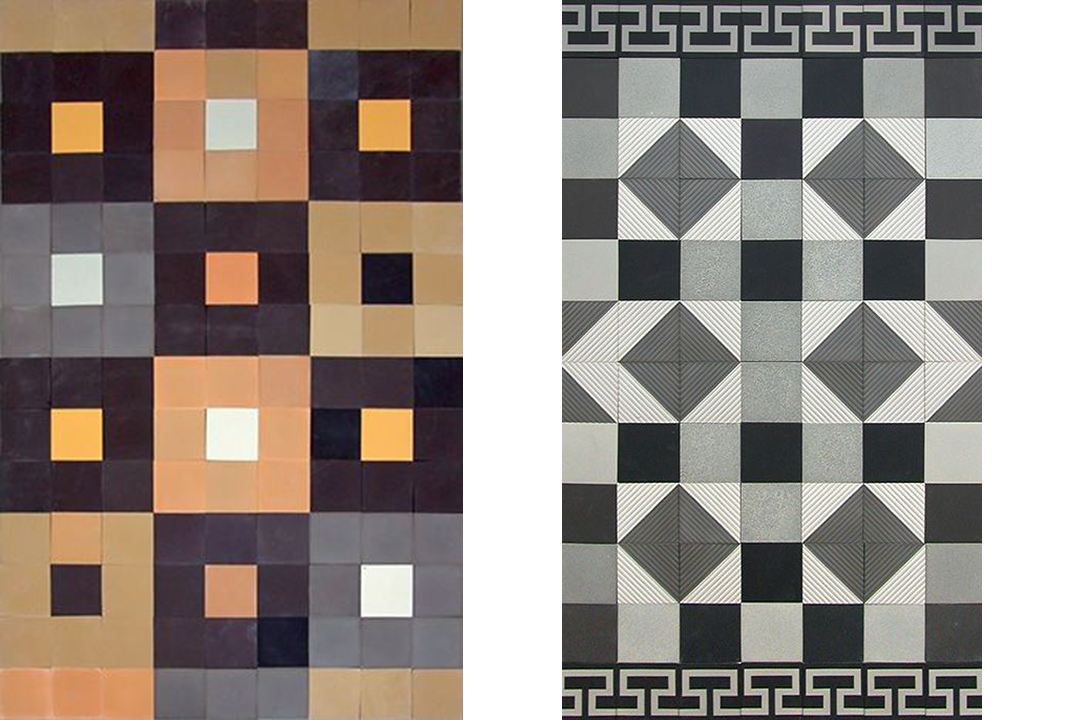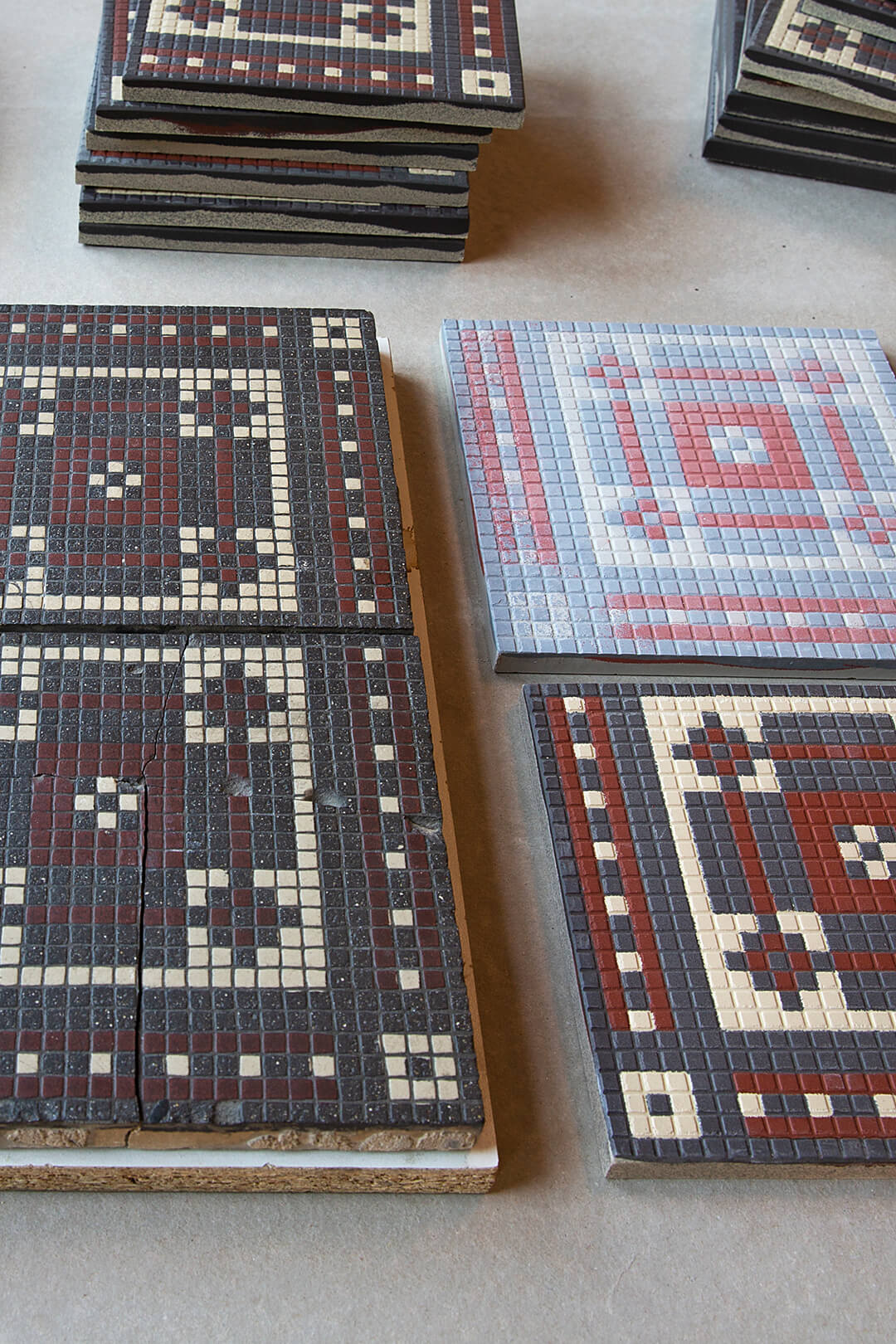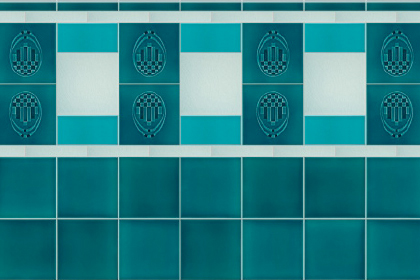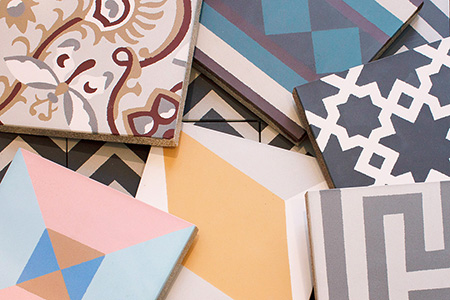Floor tile programme
Our stoneware floor tiles are amazingly versatile. Resistant to frost, abrasion and acid and insensitive to dirt, they are equally suitable for indoor and outdoor use. Numerous historical drafts of the 19th and 20th centuries are re-issued using traditional craft techniques.
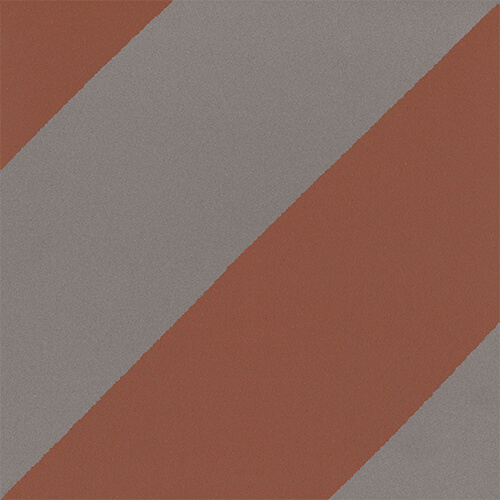
Fläche
SF 209 F
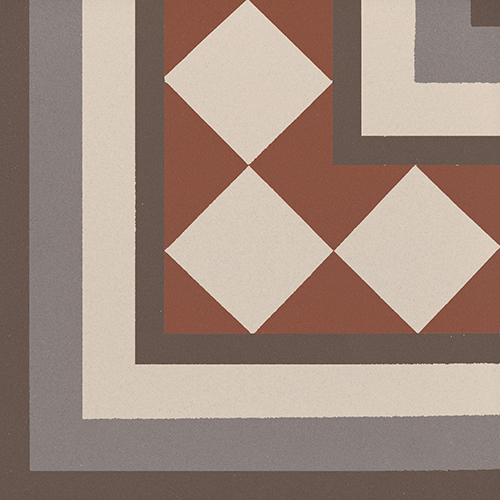
Ecke
SF 204 F e
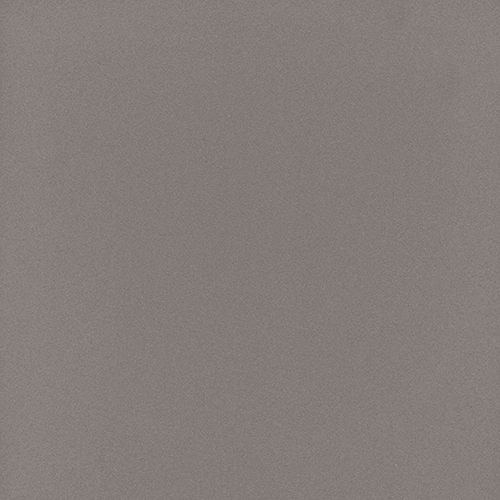
einfarbig
SF 10.5
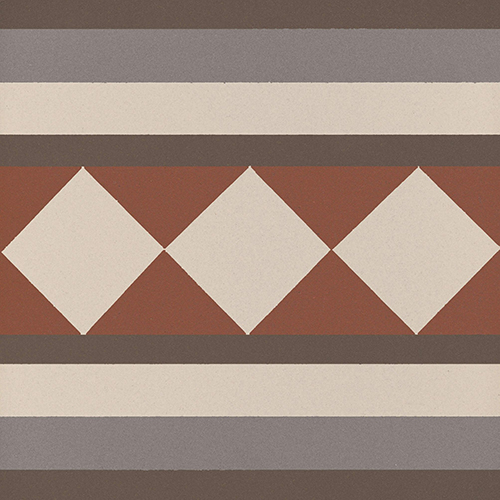
Läufer
SF 204 F
LAYING WITH
COLLECTIONS
Our 17 colour collections enable the laying of surface and edge tiles in a continuous colour scheme. The colour collections are based on the colour palette of our monochrome floor tiles. Thus also the outer filling edge can be combined in matching colours and can frame the tile carpet harmoniously. Each collection contains five colours, which run like a theme through all the motifs. We have also subordinated our modern artist editions to this system.
INLAID STONEWARE
In 1997 we succeeded in „reinventing“ and thus reviving the extremely demanding production technique of inlaid stoneware tiles as part of a restoration contract for the Karl Borromäus Church („Lueger Church“) at Vienna’s Central Cemetery. Inlaid stoneware floor tiles guarantee a permanently beautiful floor. The old originals have been lying in the corridors of Europe for over 100 years and still look magnificent.
Materials and crafts
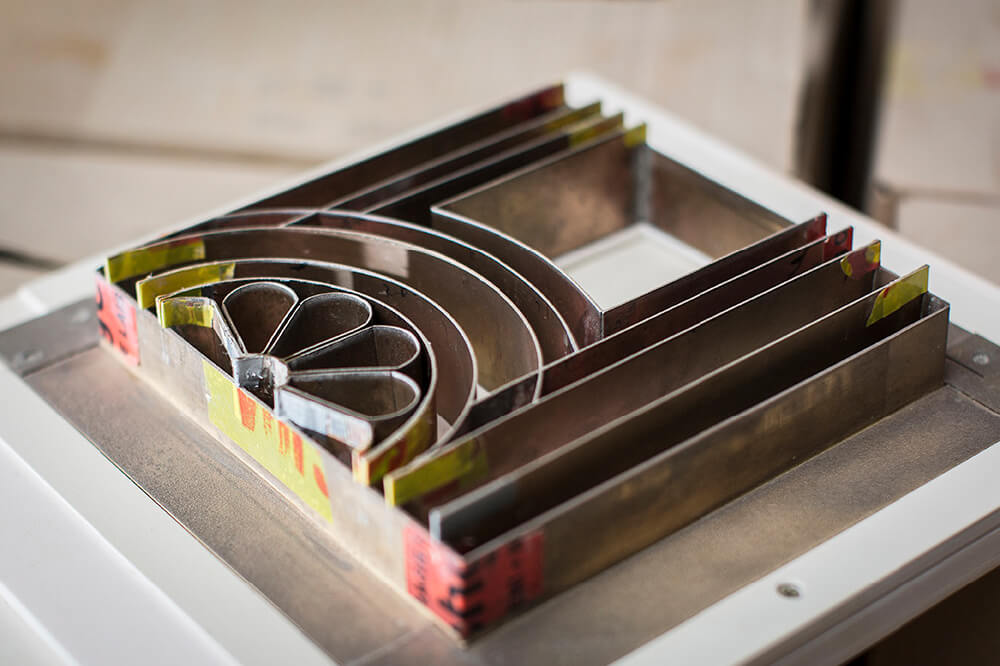
With the help of filling templates, the pigmented stoneware clays are filled by hand into a brass mould.
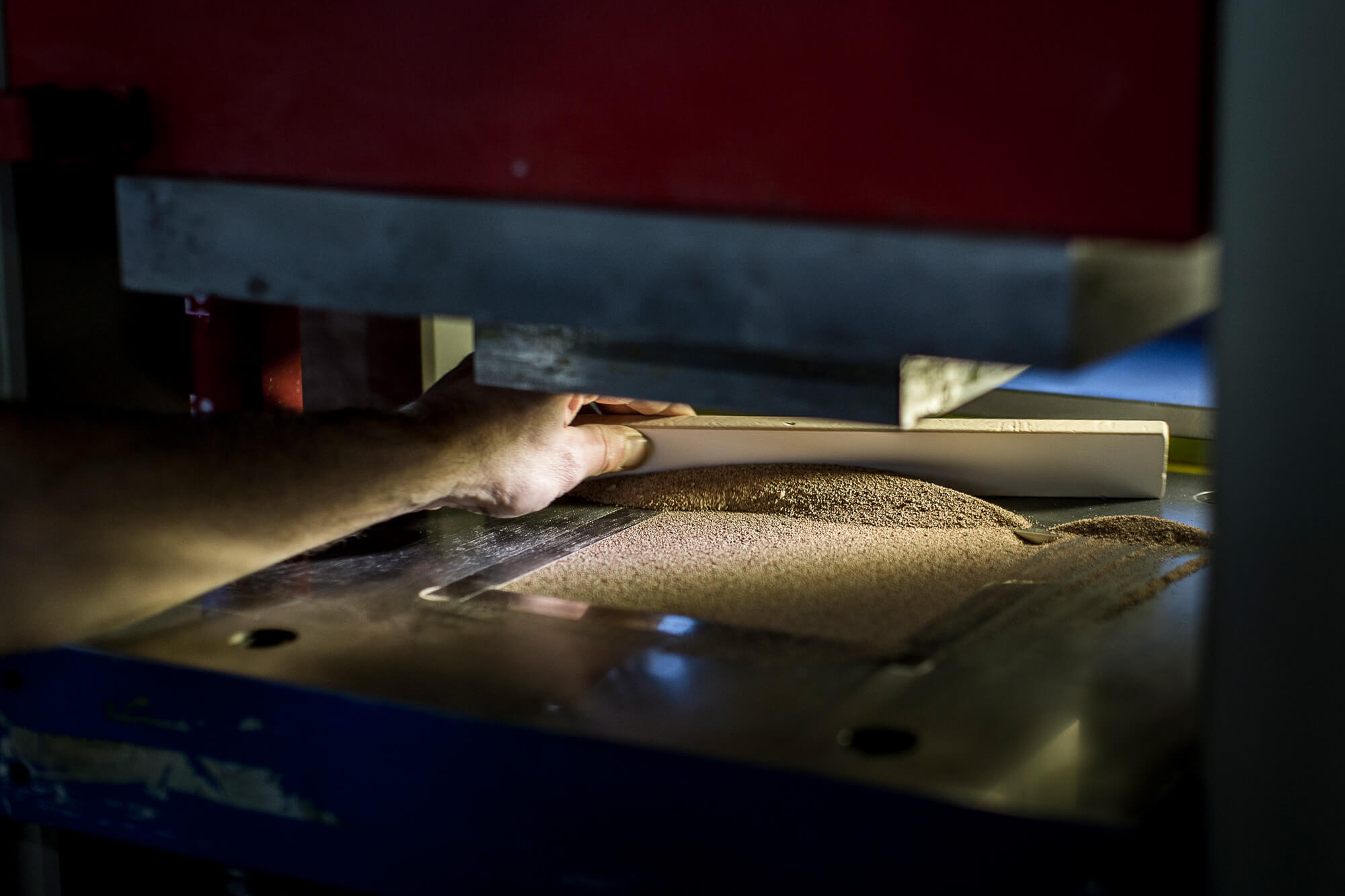
Nach dem Entfernen der Schablone wird die Farbschicht mit einem Trägergranulat aufgefüllt und unter hohem Druck als circa 3 mm dicke Intarsienschicht mit diesem verpresst.
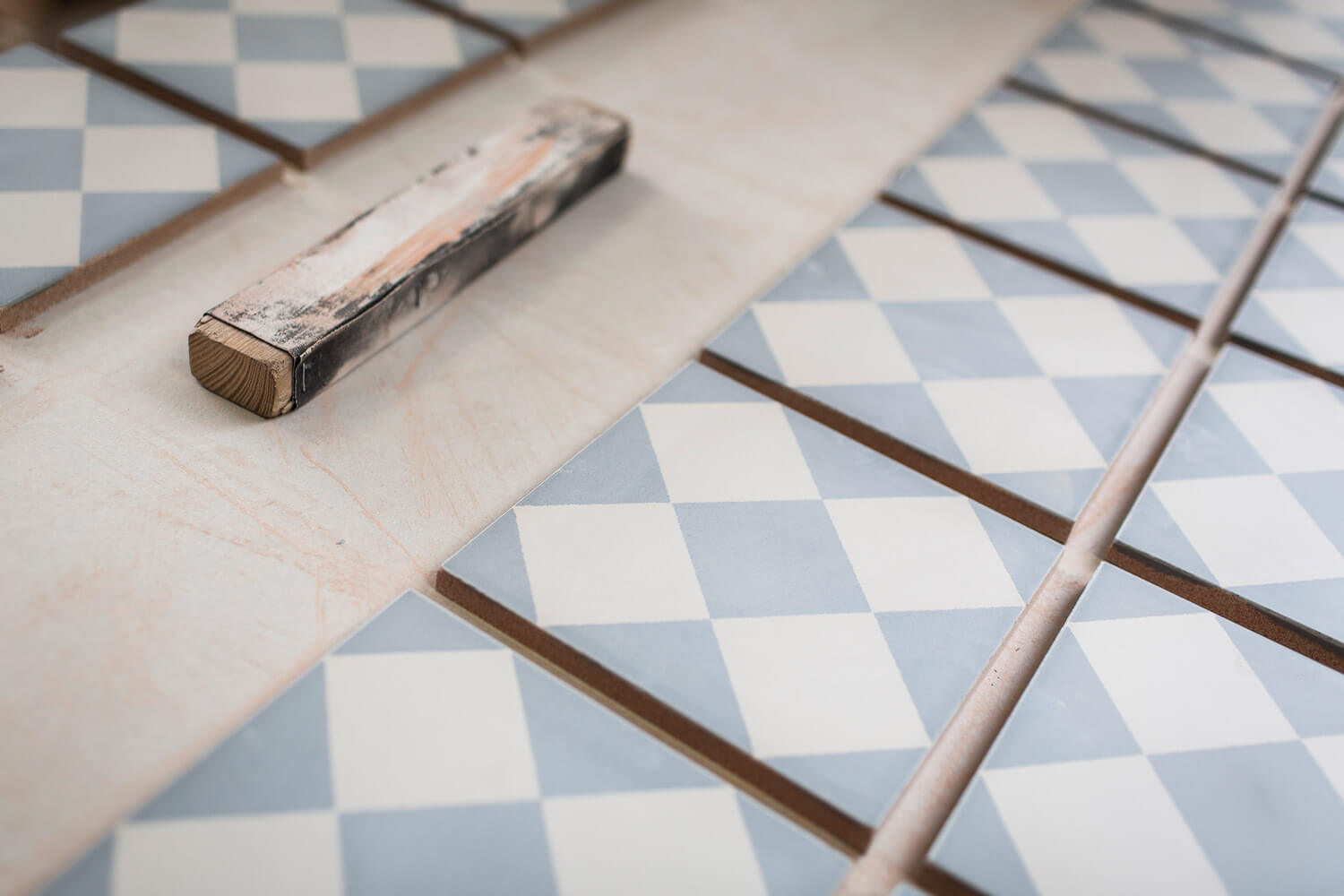
Nach dem letzten Feinschliff ist der gepresste Fliesenrohling bereit für den Brand.

Circa 70 Stunden im Brennofen bei Temperaturen um 1200°C bewirken die besondere Festigkeit der Steinzeug-Fliese und geben ihr die finale Farbgebung.
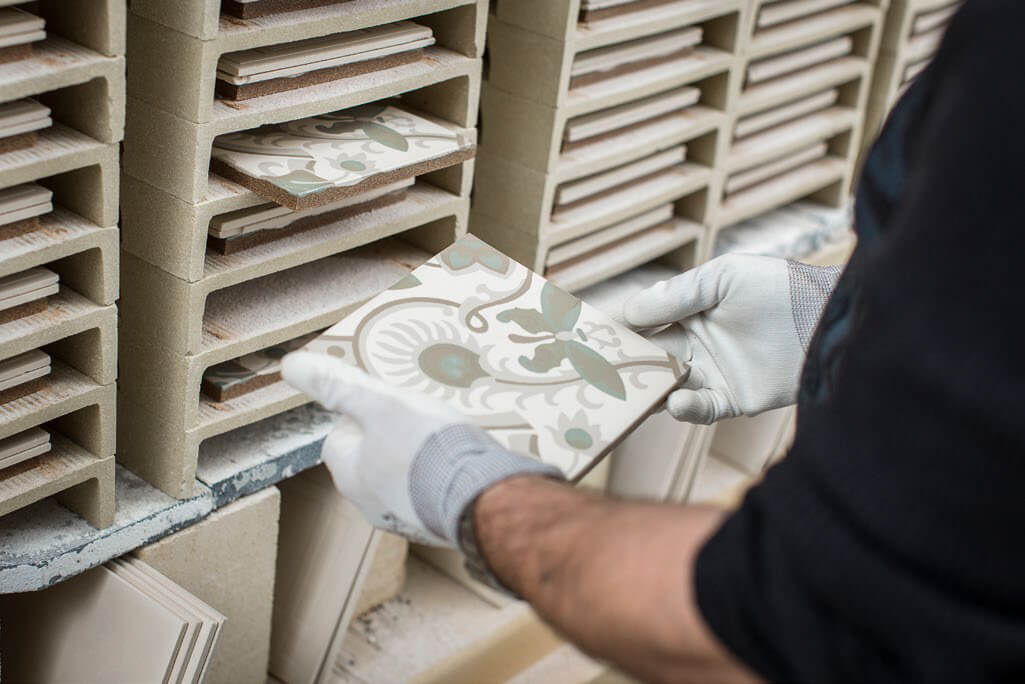
Nach dem Brennen können unser Steinzeug-Fliesen ohne weitere Oberflächenbehandlung verlegt werden.
EDIT LAYING
EXAMPLES
How does a tile motif work on a larger surface? How does the surrounding border determine the overall appearance? How does a pattern change with the change of a colour collection? An almost infinite variety of combinations – test our configurator!
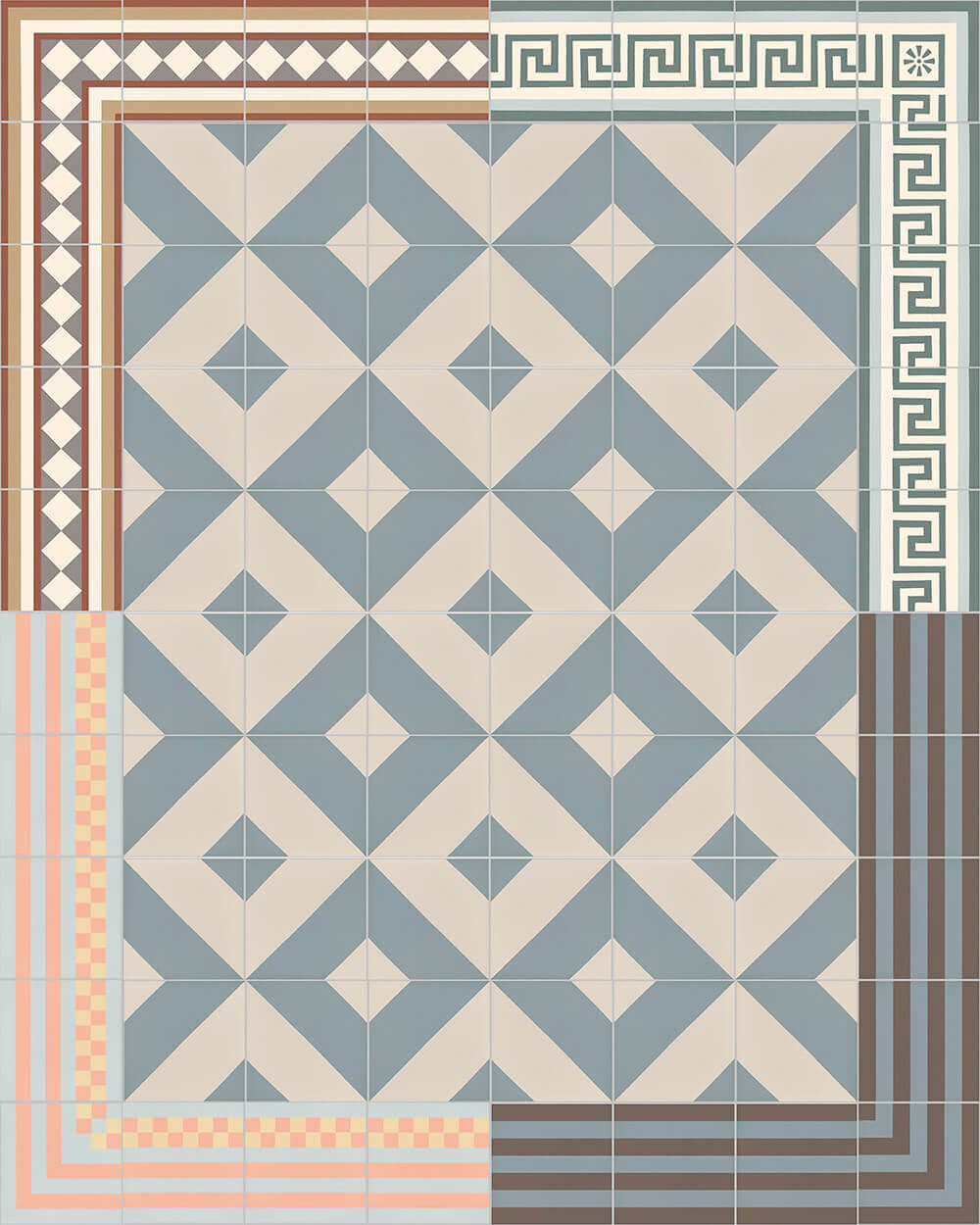
MONOCHROME PORCELAINE STONEWARE
The colour palette of our single-colour floor tiles includes 26 classic colours. There are natural limits to the colours, as only pigments that retain their colour at temperatures of up to 1200 °C can be used.
Installed in a plain or multi-coloured bond or in combination with the multi-coloured floor tiles, they offer a wide variety of combinations based on historical models, but also for modern floors. The colours are the basis of our colour collections of multi-coloured floor tiles.
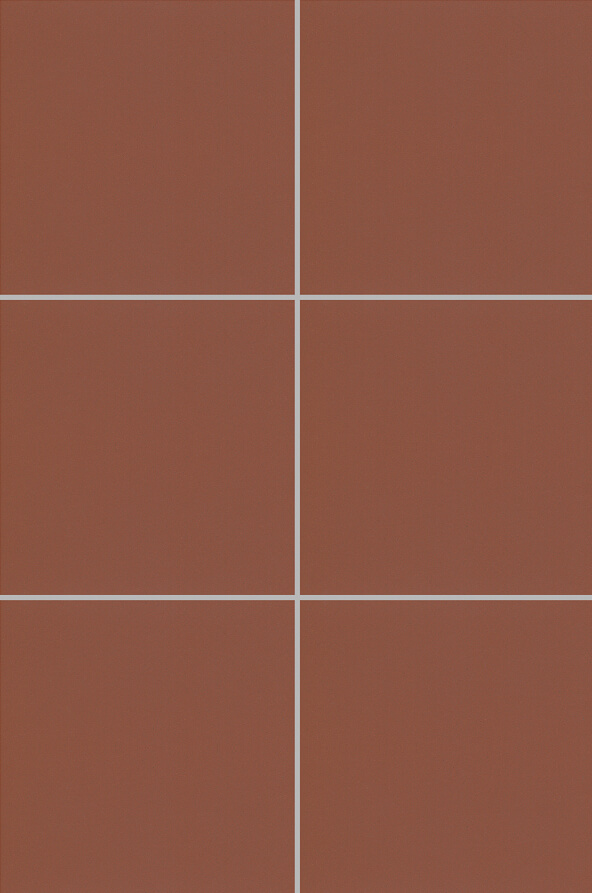
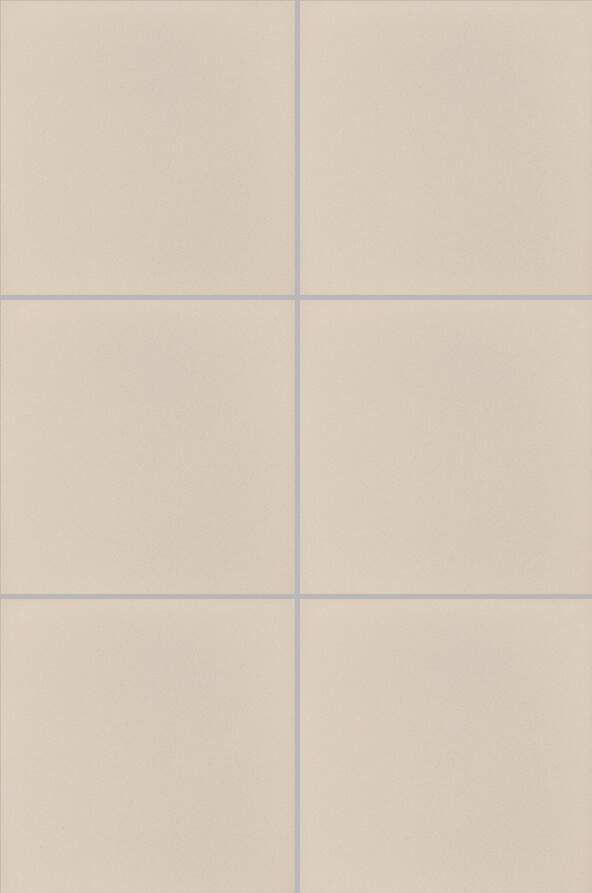
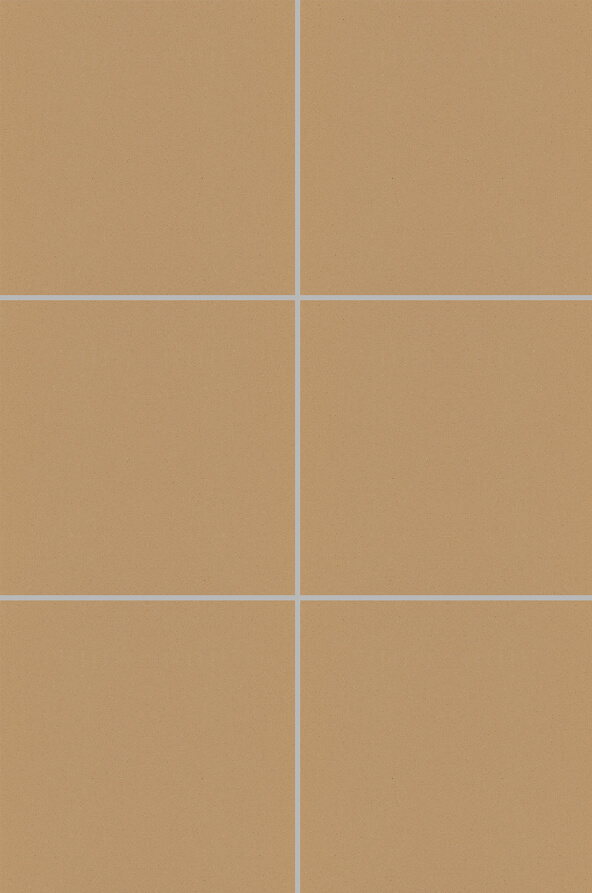

Designing with
monochrome
floor tiles
The different effects of stack bond or diamond laying alone can have a decisive influence on your room. The checkerboard laying is probably the most widespread classical installation variant for the combination of several colours. However, there are far more design possibilities such as, for example, the half bond, the so-called „Roman laying“ or the laying of whole shapes and patterns.
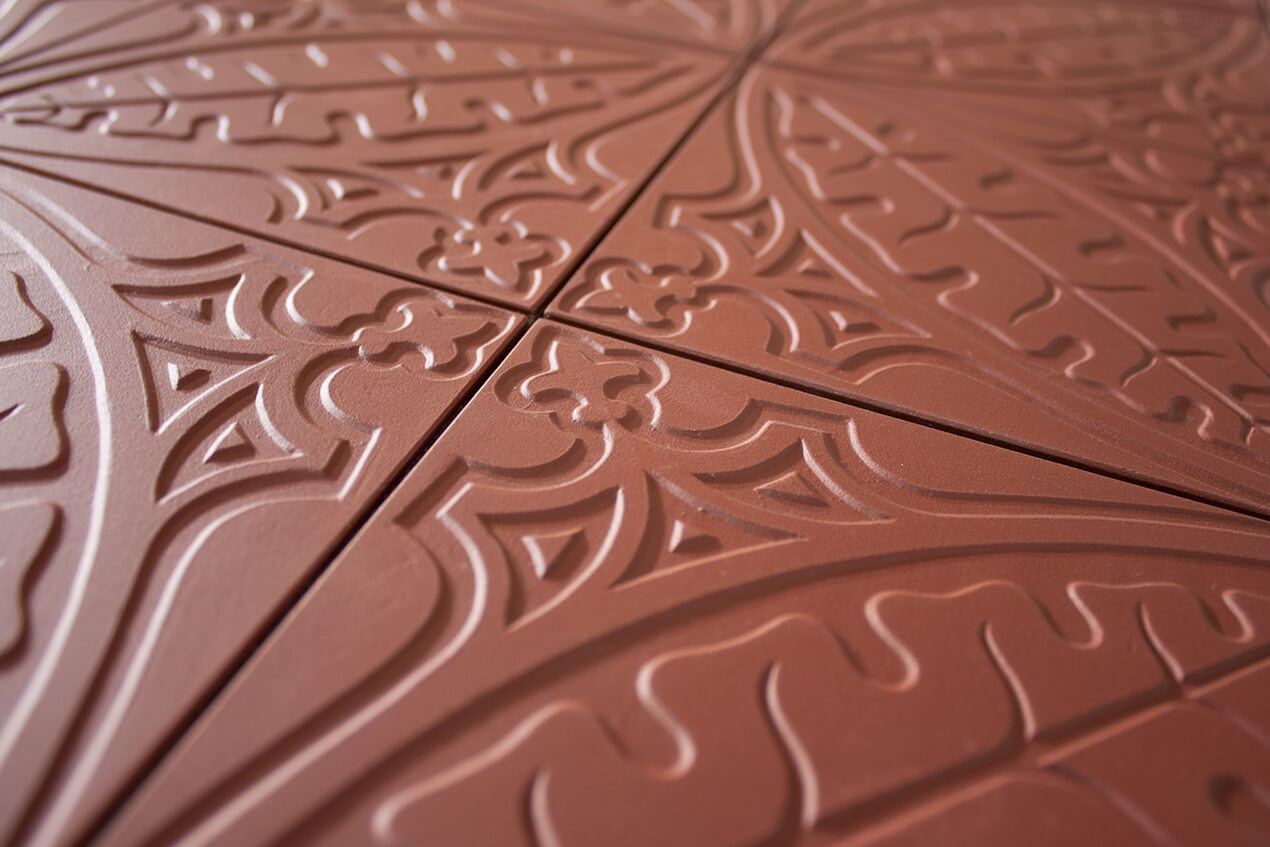
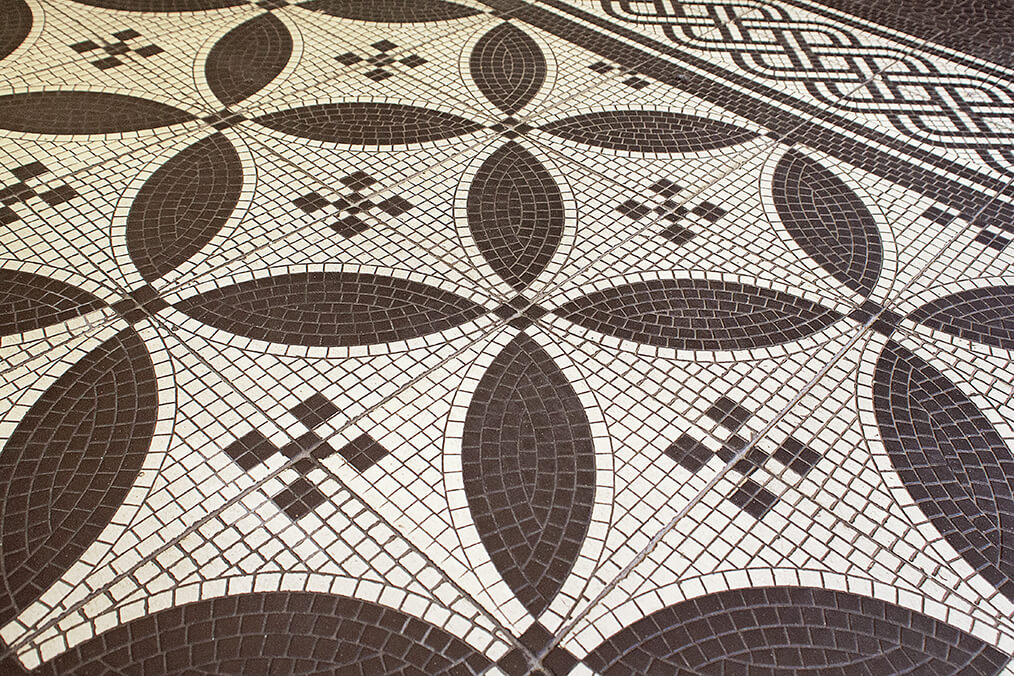
Decorated
floor tiles
with relief
Inspired by the Roman mosaics uncovered in 1852 in Nennig near Mettlach, Eugen von Boch devised a process for the production of multicoloured stoneware tiles. The first tiles, which von Boch produced with the help of his ingenious invention, took over the ornamentation of these Roman floor mosaics, including the joint pattern, which was indicated as a relief. These mosaic reliefs were mostly laid in public buildings, hallways and terraces and were initially produced until the 1930s. The characteristic appearance of the tiles is due to the deposit of dirt and patina in the recessed areas of the relief. This gives the impression of small stones separated from each other. Floor tiles with relief are particularly suitable for passageways or outdoor areas, as the relief additionally increases the slip resistance.
Octagons
Our traditionally produced, historical octagonal tiles, together with the respective inlays, result in a classic and striking tile carpet. We differentiate between equilateral octagonal tiles and non-equilateral octagonal tiles. The equilateral octagonal tiles measure 17 × 17 cm and the corresponding inlays measure 7 × 7 cm. For non-equilateral octagonal tiles, the dimensions are 16 × 16 cm and that of the inlay 5 × 5 cm. Single-colour inserts are available in all our standard and special colour range. For installation in the border area, we produce half and quartered inlays on request. Octagonal stoneware tiles are suitable for both indoor and outdoor use.
HEXAGONAL TILES
The hexagon generally stands for the harmony of the divine and the secular, which is why hexagonal terracotta slabs were frequently used in sacred buildings in the 17th century. However, the hexagonal shape also ensures particularly high stability in the bond. Due to the smaller ratio of circumference to surface, hexagonal tile floors are particularly resilient and were therefore used in laboratories and workshops at the beginning of the 20th century as an acid-resistant, extremely robust floor covering.
The surface and colour of the hexagonal tiles were suitable for every application, like the slip-resistant variants with mosaic and rice grain reliefs often used in public areas.
In any case, hexagonal tiles offer an exciting alternative to other traditional formats.
In addition, the use of different colours offers generous scope for design and sets airy accents.
Floor tiles in our factory outlet
There are many reasons why individual batches are sold in the factory. They have one thing in common: they are immediately available.
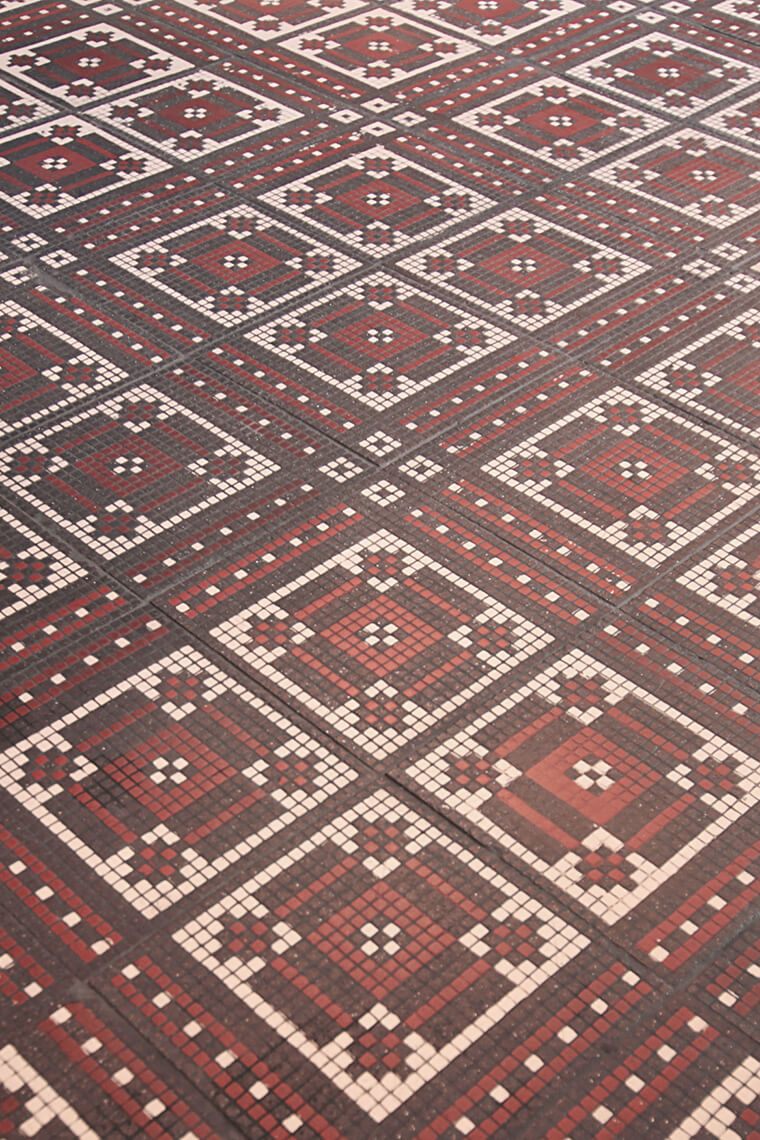
Restoration and
reproduction of
historical tiles
The only way to achieve a good restoration of existing tiles is to customize the tiles according to the original. The adjustment of the replica to the original is then in the hands of our specialists.
For the preparation of a non-binding quotation, we need exact details (dimensions and quantity) of the tiles to be reproduced.
References
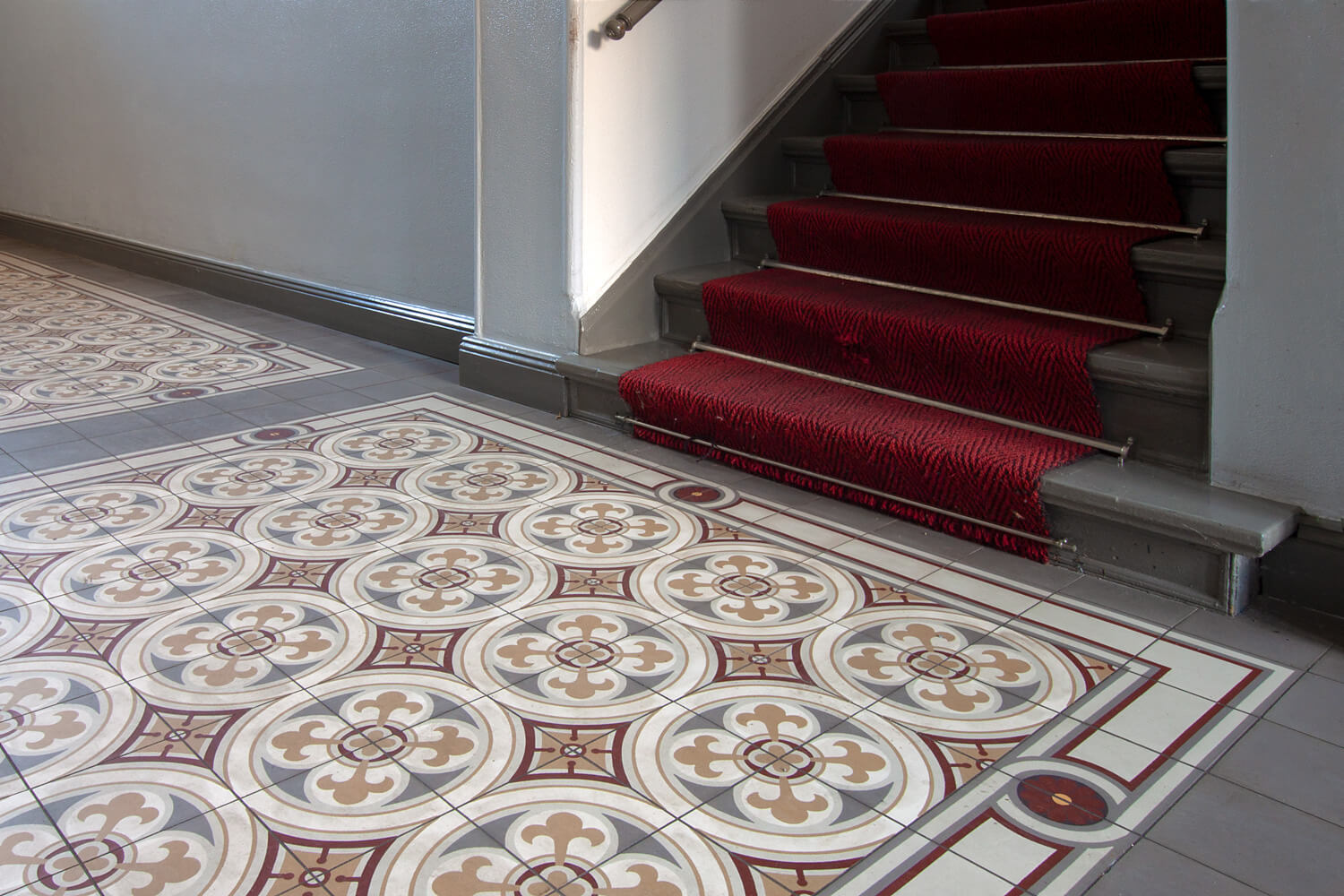
House entrance in Berlin
The floor tile SF 556 D laid in a Berlin house entrance in Tempelhof.
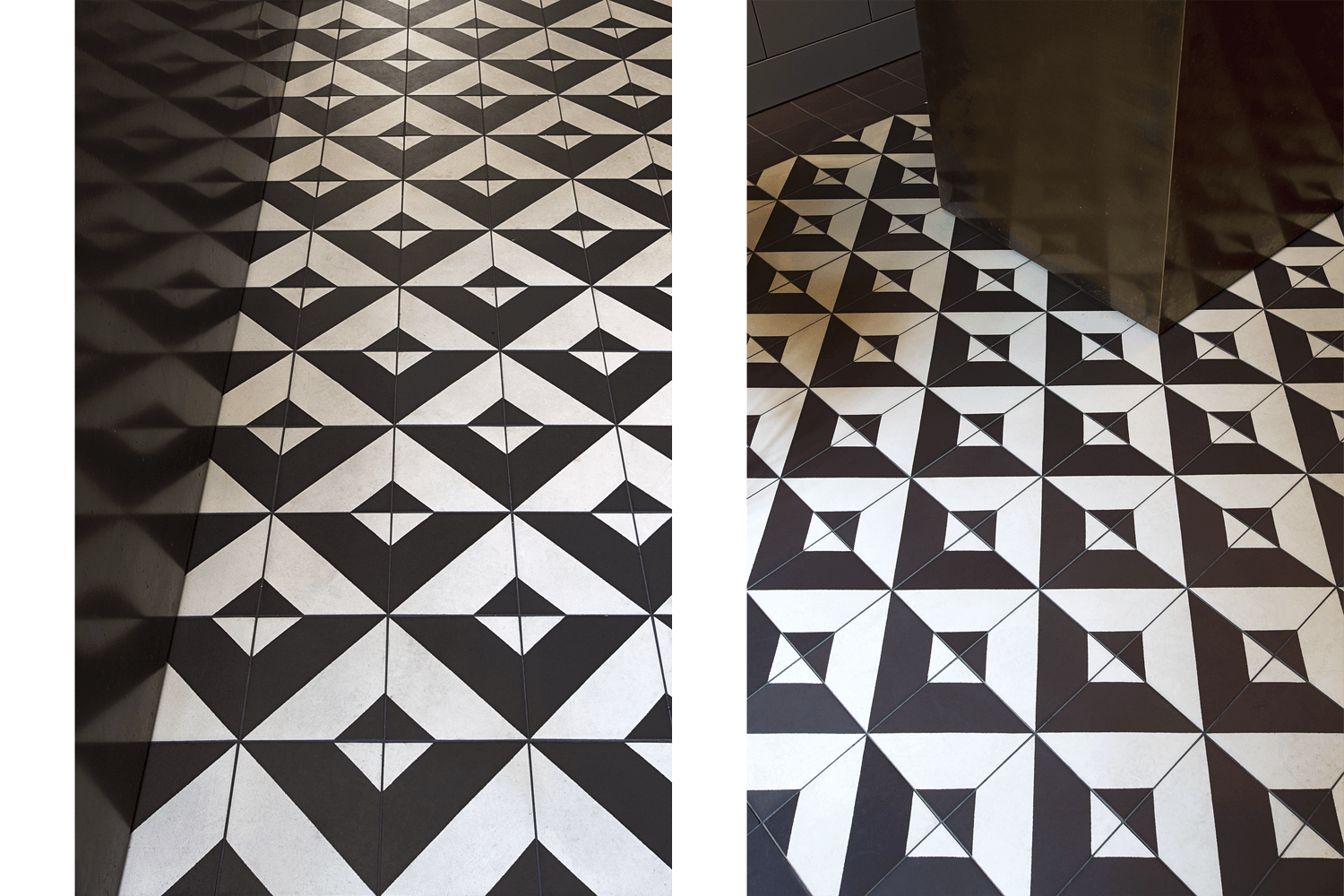
Sawade, Berlin
The floor tile SF 209 11/3 in the Sawade flagship store in Hackesche Höfe.
Project draft: Flachsbarth Schultz, 2016
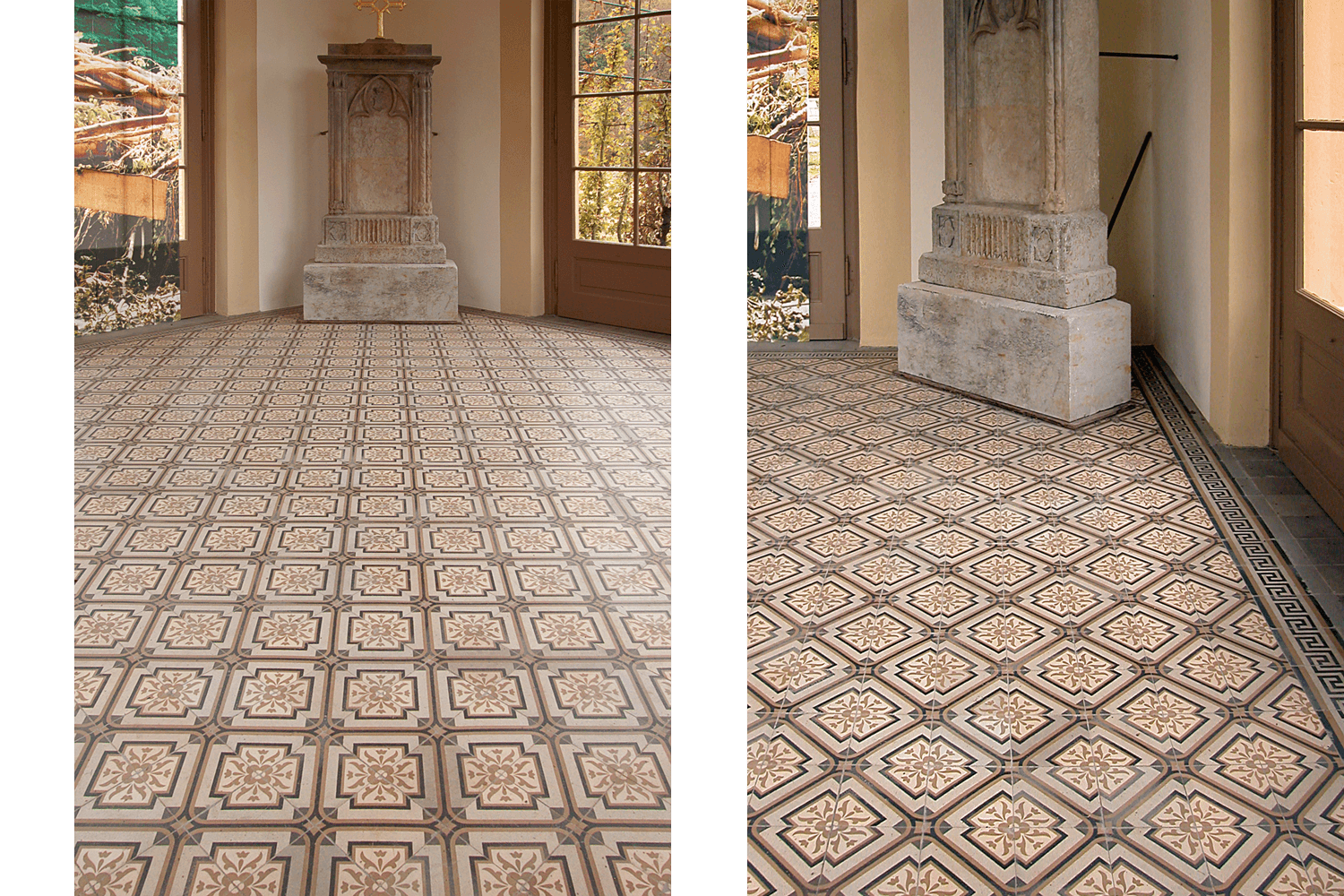
Schloss Weesenstein
GOLEM produced multi-colored inlaid stoneware tiles for the renovation of the garden pavilion in the palace gardens
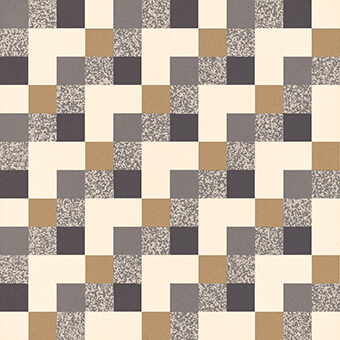
Fläche
SF TG 12502 C
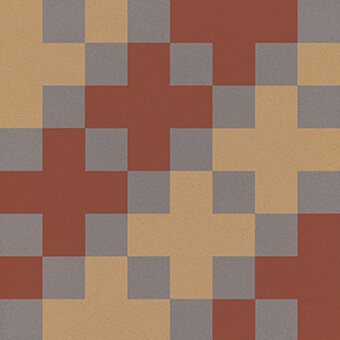
Fläche
SF TG 8306 D
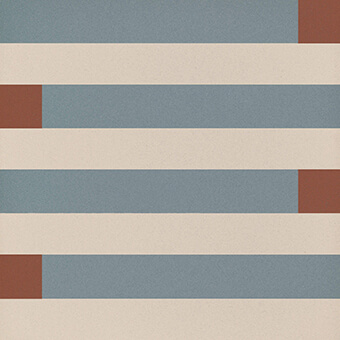
Fläche
SF TG 8301 L

Läufer
SF TG 8202 E
Artist editions
In addition to our historical motifs, we also develop new designs and continue thinking about the object tile. Surveying a millennia long history of the tile full of different cultural influences inspires us to new motives and modern interpretations. The graphically abstract motifs of the editions, which are also part of our colour collections, play with ornamentation and format and can be easily combined with the historical motifs.
